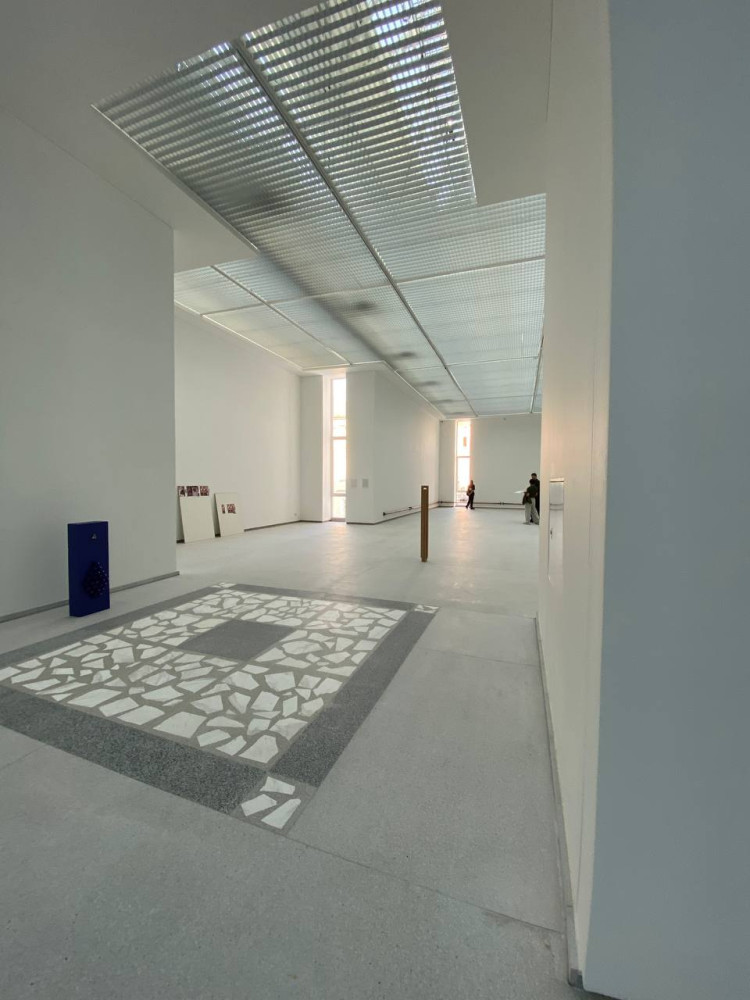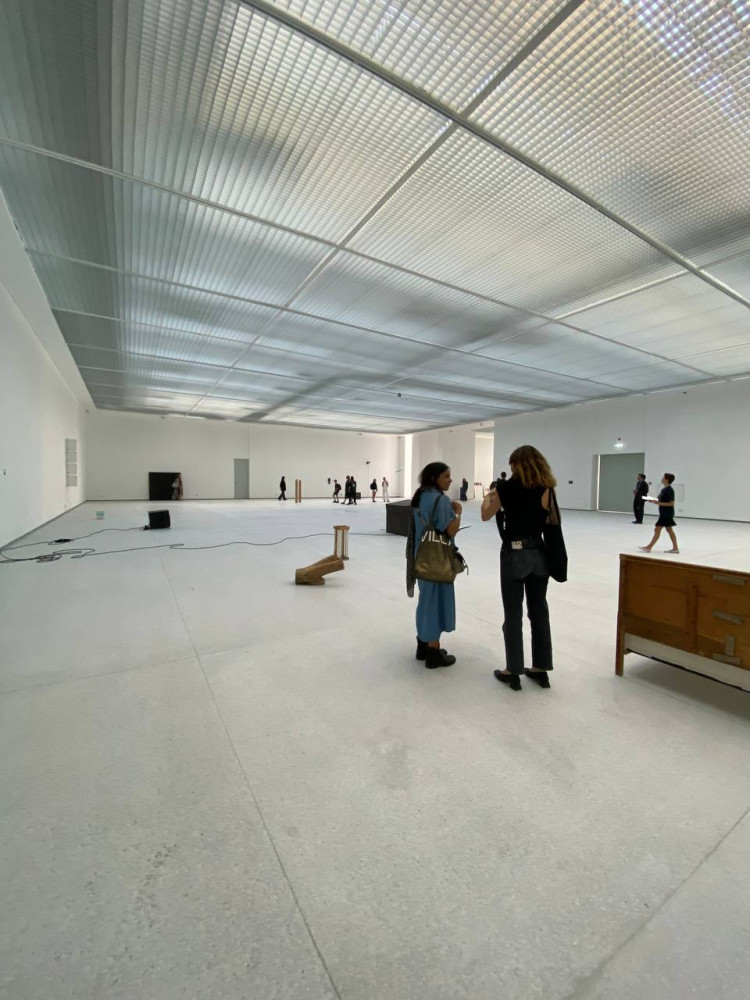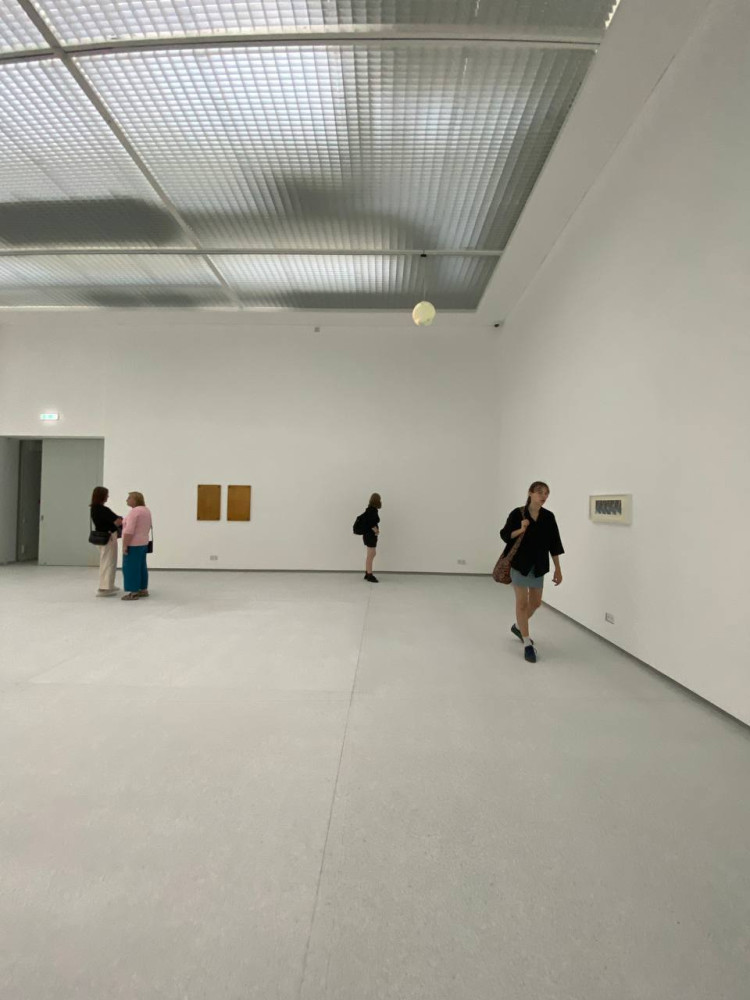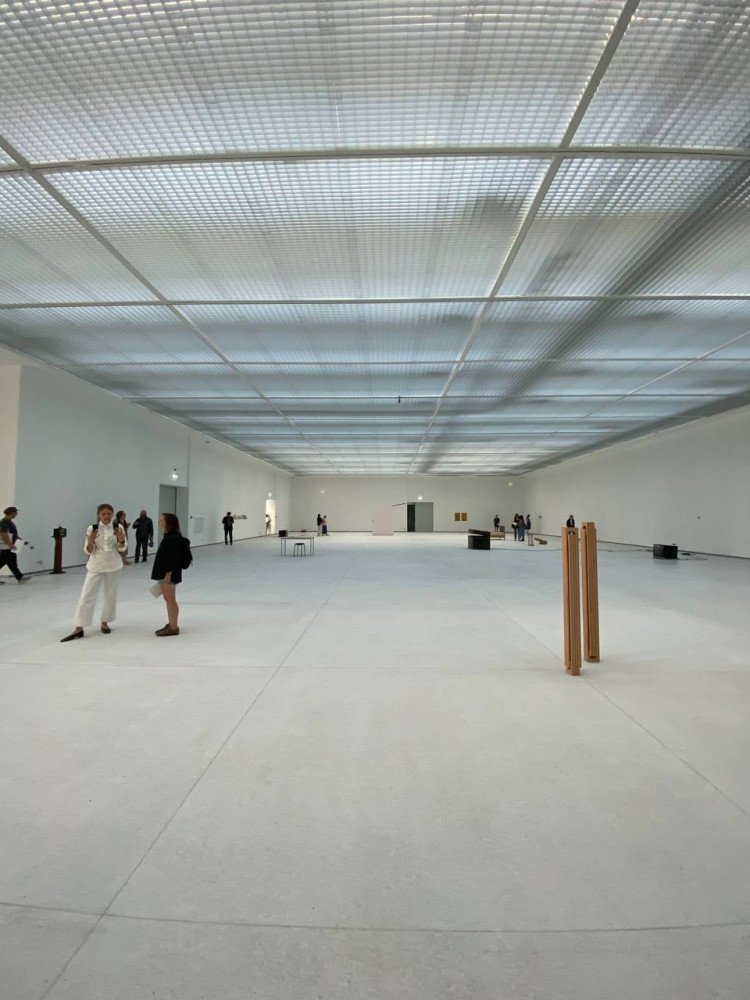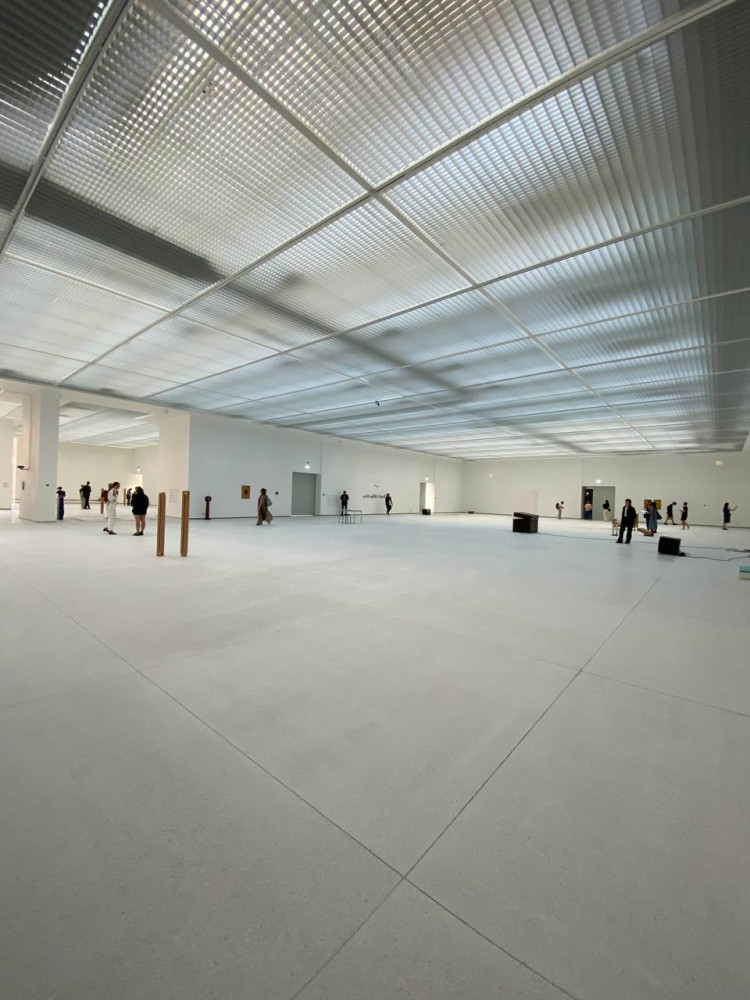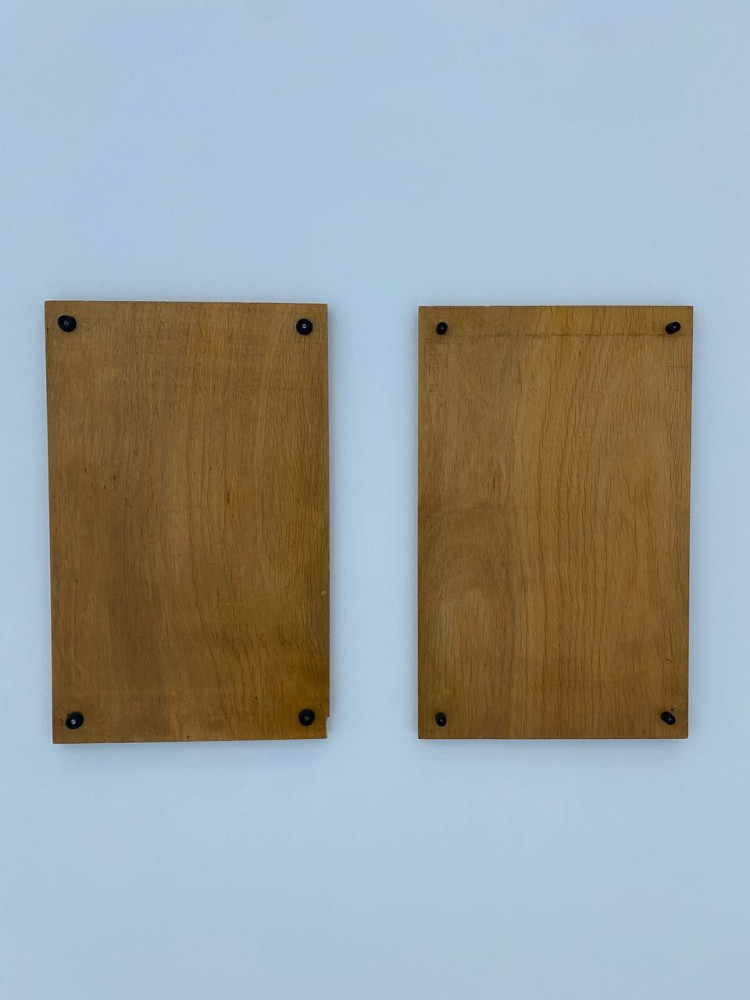I thought long and hard about which exhibit piece to write about. It was not an easy choice. I visited the museum five times, in an attempt to better understand the project. My mistake was trying to find some research or deeper concept behind each artwork, which only frustrated me when I didn’t find it. I tried to grasp the concept behind the exhibition and each individual work, bombarding museum staff with numerous questions, yet I didn’t receive any satisfying answers.
When I first saw the exhibition at the opening, I was confused. I had high expectations: I wanted to see projects that would take my breath away, thoughtful research pieces that would serve as examples for me. I wanted to feel inspired. But I saw none of that. All I saw were vast empty spaces. The curator's selection puzzled me. Why had these particular works and artists been chosen? What justified this selection? What tied these works together? What was the concept? I couldn’t answer these questions on my first, second, or even third visit, and this frustration only grew.
My problem was that I wasn’t looking at the project on a larger scale. I was searching for meaning in each individual piece. Then, during my fourth visit, angry and exhausted from my quest for understanding — it suddenly insighted me! The main exhibit was the museum itself: the building, the space. I didn’t need to break down the exhibition into individual pieces to seek sense behind; the meaning lay in simply relaxing and enjoying the space.
The exhibition is a cohesive story, indivisible. To display an analogy, the exhibition is like a word, and the works are the letters of that word. You can’t say that this or that letter doesn’t fit, that one doesn’t look good next to another, or that there are too many or too few letters. There are precisely as many letters as needed, each in its place. If you rearrange or replace the letters, you’d end up with a different word entirely. Most importantly, the meaning of any word depends on its context, and it can change based on the context and the word’s place in a sentence.
Speaking of the 15th Baltic Triennial as a word, here every letter is in its place, and this word is perfectly embedded within the context of the Lithuanian art scene. It is loud, controversial—like a well-placed expletive that amplifies and underscores the entire sentence. It highlights everything happening around it, adding sharpness. This word stands out from the rest but enhances the meaning, making the entire sentence more convincing, more capable.
And, of course, the capital letter in this word is the building itself—ŠMC.
In conclusion, the 15th Baltic Triennial challenges traditional expectations of an exhibition by defying the notion that each artwork must individually carry profound meaning. Instead, it weaves a collective narrative where the building, the space, and the interplay between works form the central concept. This realization reframes the viewer's role, shifting from a seeker of isolated meaning to an active participant in experiencing the whole.
The Triennial invites us to rethink the boundaries of contemporary art and its context. It asks us to embrace ambiguity, to let go of rigid interpretations, and to appreciate the exhibition as an evolving dialogue with its surroundings. It’s not about the "letters" themselves but the "word" they form and the "sentence" they belong to—a compelling testament to the synergy between space, art, and meaning.
Ultimately, the Triennial stands as both a mirror and a provocation to the Lithuanian art scene, a punctuation mark that demands attention and redefines the discourse around contemporary art. It’s a bold reminder that sometimes, the most profound experiences are not found in dissecting details but in stepping back to see the bigger picture.
Sviatlana Petushkova
